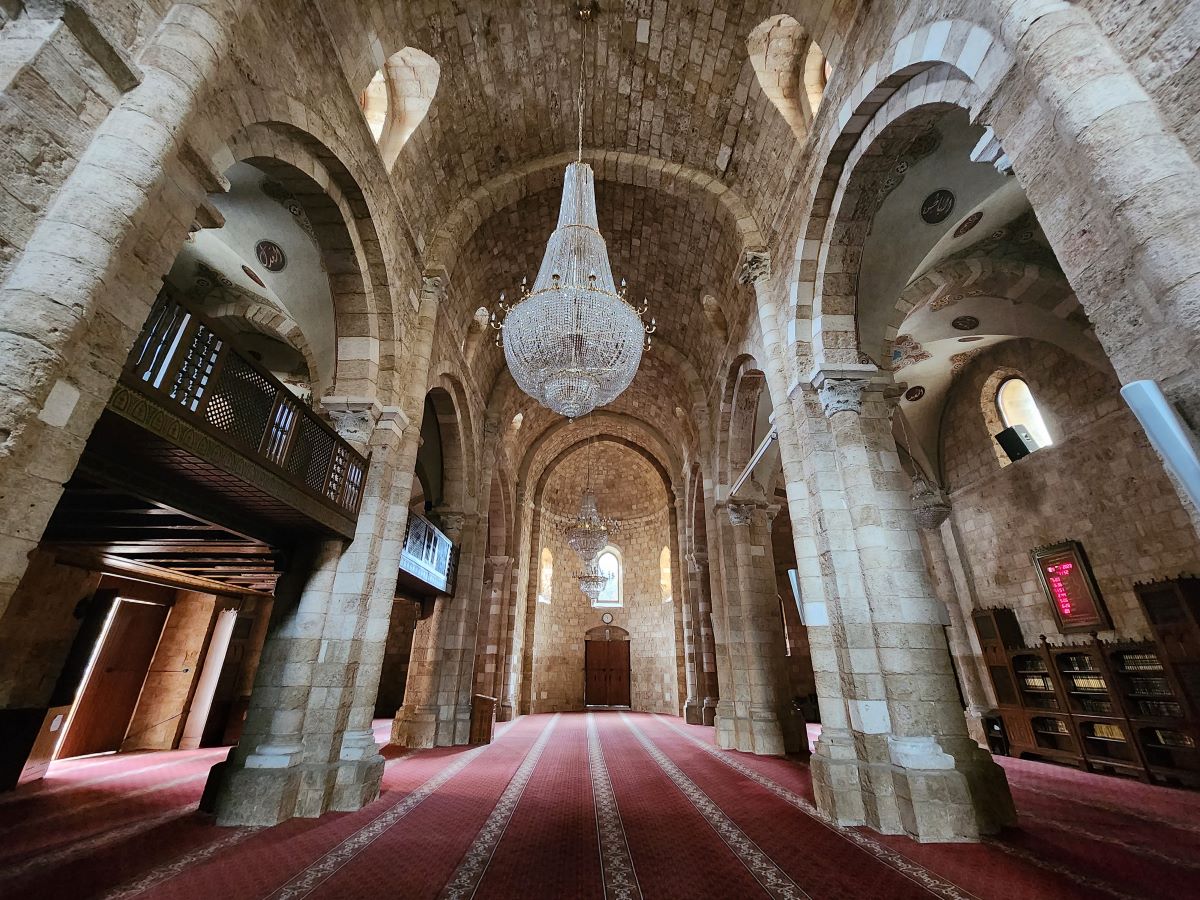The Grand Omari Mosque of Down-town Beirut is known to have replaced St. John’s Crusader cathedral, and preserved most of its structural plan. This article will provide an overview about the structure and its history.
Timeline
*Please be advised that the monument’s historical timeline is incomplete and in need of revision due to the existence of numerous historical records, analyses, and theories related to the site*
Antiquity period – It is believed that a temple was present on site;
Byzantine era – It is believed that the temple was converted into a church;
635 – Under Caliph Omar Ibn Al-Khattab reign, the church may have been converted into a mosque;
Early 11 th century AD – The mosque was converted by the Crusaders into a cathedral dedicated to St. John upon their conquest of Beirut;
1187 – Salah al-Din al-Ayyubi regained Beirut from the Crusaders and reportedly turned the cathedral into a mosque;
1197 – the Crusaders regained the city and reportedly converted again the mosque into a cathedral.
1291 – The Mamluks liberated Beirut from the Crusaders and restored the cathedral into a mosque. It was named as “Al-Omari Mosque” in memory of the Caliph Omar Ibn Al-Khattab;
1350 – Mamluk-style minaret and entrance (west side) were added to the mosque;
1936 – The mosque, later known as “The Great Omari Mosque” was classified among the ancient buildings by a presidential decree issued in 1936;
French Mandate era – the Southern façade was redesigned by adding a portico and merging the mosque’s main entrance to the new row of Maarad Street;
1975 – 1990 – The mosque was severely damaged during the civil war;
2004 – The mosque was renovated in a way that preserved its origins and history. A second minaret was built on the northwest corner and a new courtyard supported by columns was added.
Structure
This sandstone structure is a charming model of a small colony cathedral, measuring 33×22. It is affordable, refined, durable and practical, resembling other Crusader churches, particularly the nearby St. John-Marc Cathedral in Byblos, except for the absence of a dome.
The most prominent exterior feature is the trio of apses on the northern side, evocative of an ancient Romanesque church in France. The corbels are noteworthy, with the central apse boasting nineteen and each apsidiole containing eight.
The interior features a central nave flanked by slightly lower side aisles that lead to three apses. Each apse has a single window, with the apse windows being the only adorned ones.
Mosque
The mosque was also known under several designation over several periods, such as the mosque of Prophet Yehya (St. John), El Tawba mosque (mosque of Repentance) and Foutouh El Islam mosque (Conquest/Victory of Islam mosque).
Its interior sandstone walls are decorated in Mamluk and Ottoman inscriptions. Moreover, the mosque houses a golden steel cage, a gift from Sultan Abdul Hamid II to Beirut, beleived to encircle a shrine for John the Baptist. Additionally, was reported that three hairs from prophet Muhammad were preserved in the southwestern side of the mosque; they were presented to the mosque by Sultan Abd el Mejid I.
Karim Sokhn
Tour Operator & Tour Guide
References:
La Cathedrale Saint-Jean De Beyrouth, Camille Enlart, 1904
https://www.cometolebanon.com/beirut/grand-omari-mosque






